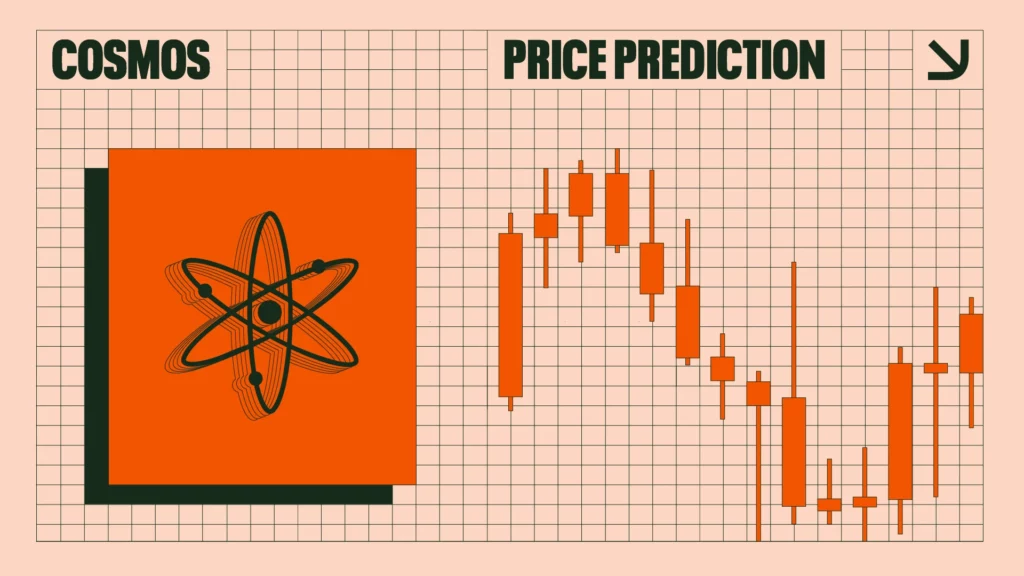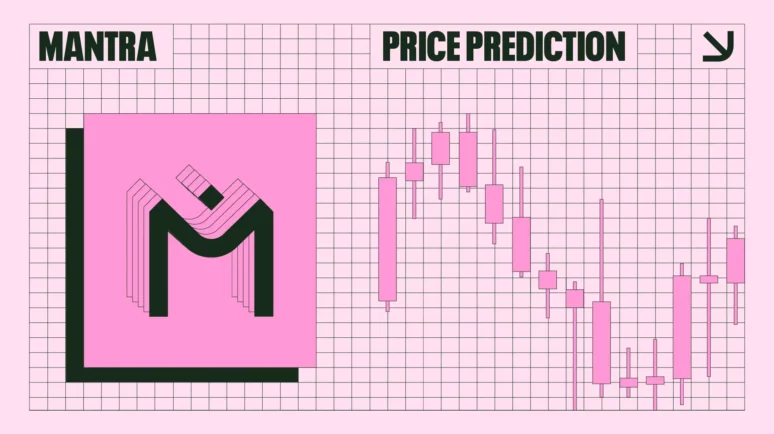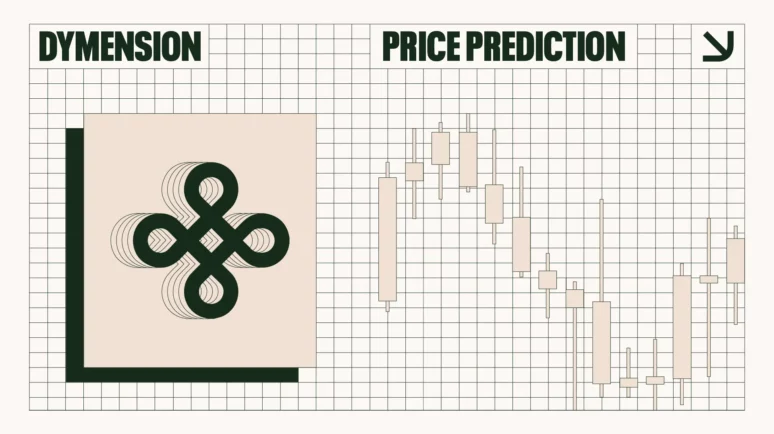Cosmos Price Prediction 2024: Can ATOM Explode?

What's ahead for Cosmos?
Key Takeaways
- ATOM is the native coin of the Cosmos blockchain network.
- The token price has increased but the circulating supply decreased.
- One price prediction says it may reach $36.12 next year.
Cosmos did not immediately respond to a request for comment
But what is Cosmos (ATOM)? How does Cosmos work? Let’s see and find out what we can, and also examine some of the Cosmos price predictions that were being made on February 8, 2024.
Cosmos Price Prediction
Let’s examine some of the Cosmos price predictions being made on February 8, 2024. It is crucial to bear in mind that price forecasts, particularly for a potentially volatile asset like cryptocurrency, often turn out to be inaccurate. Additionally, please remember that many long-term crypto price predictions are generated using algorithms, which means they can change at any time.
| 2024 | 2025 | 2030 | |
|---|---|---|---|
| Prediction #1 | $20.85 | $24.36 | $24.89 |
| Prediction #2 | $15.35 | $21.77 | $132.83 |
| Prediction #3 | $26.61 | $36.12 | $83.64 |
First, CoinCodex had a short-term Cosmos price prediction that said the token would increase to $9.85 by February 13 before decreasing to $8.84 by March 7. The site’s technical analysis was bearish, with 13 indicators sending bullish signals and 17 making negative ones.
Cosmos Price Prediction for 2024
DigitalCoinPrice was very optimistic, saying ATOM could reach $20.85 in 2023. PricePrediction.net argued that ATOM could trade at $15.35. Meanwhile, Bitnation said that Cosmos could be worth $26.61 by the end of the year.
Cosmos Price Prediction for 2025
PricePrediction.net said ATOM would trade at $21.77 in 2025. Bitnation had it standing at $36.12. DigitalCoinPrice was somewhere between the two, saying Cosmos would be worth $24.36 next year.
Cosmos Price Prediction for 2030
Looking forward to a more long-term Cosmos price prediction, PricePrediction.net was out in the lead, forecasting the token would hit $132.83 in 2030. Bitnation said it would get to $83.64. DigitalCoinPrice had an ATOM price prediction that said the crypto would reach $24.89 at the start of the next decade.
Google BardAI Price Prediction for Cosmos (as of February 8)
Google’s BardAI platform gave the following price prediction for Cosmos on February 8. Please remember that the exact price prediction of an asset or cryptocurrency in the future is nearly impossible to achieve.
Additionally, artificial intelligent price predictions are predicated on past performances and are in no way entirely accurate.
Short Term (Next 3 Months):
- Expected price:$8.72
- Reasons:
- Overall market sentiment: If the overall cryptocurrency market is bullish, the price of Cosmos is more likely to go up. Conversely, if the market is bearish, the price is more likely to go down.
- Adoption and development of the Cosmos ecosystem: Increased adoption and development activity within the Cosmos ecosystem could lead to increased demand for ATOM, which could drive up the price.
- Regulatory changes: Regulatory changes could have a significant impact on the price of Cosmos, depending on the nature of the changes.
- Unexpected events: Unforeseen events, such as hacks or major news stories, could also affect the price of Cosmos.
Medium Term (Next 6 Months):
- Expected price: $8.90
- Reasons:
- Overall crypto market sentiment: The price of ATOM is likely to be influenced by the overall sentiment of the cryptocurrency market.
- Adoption and development of the Cosmos ecosystem: Increased adoption and development of projects within the Cosmos ecosystem could lead to an increase in the price of ATOM.
- Regulatory landscape: Changes in regulations could impact the price of ATOM.
- Unforeseen events: Unexpected events, such as hacks or major news announcements, could also impact the price of ATOM.
Long Term (Next 5 Years):
- Expected price: $12.83
- Reasons:
- Overall cryptocurrency market trends: The price of Cosmos is likely to be influenced by the overall health of the cryptocurrency market. If the market experiences a bull run, Cosmos could see its price increase significantly. Conversely, if the market experiences a bear run, Cosmos could see its price decrease.
- Adoption and development of the Cosmos ecosystem: The more developers and users that adopt the Cosmos ecosystem, the more valuable ATOM could become. This includes the growth of existing projects on Cosmos, the development of new projects, and the adoption of Cosmos by mainstream institutions.
- Regulations: Regulatory changes could impact the price of Cosmos. For example, if governments implement stricter regulations on cryptocurrencies, it could deter adoption and lead to a decrease in price.
- Technical advancements: The development of new technologies within the Cosmos ecosystem could also impact the price of ATOM. For example, improvements to the Cosmos Hub or the development of new interoperability protocols could increase demand for ATOM.
Recent Updates from Cosmos
Cosmos w elcomed Dymension to its interchain on February 6, 2024. Dymension mainnet paves the way for standardizing rollups with IBC and enables the easy deployment of app-specific rollups (RollApps). “The Interchain Stack empowers the modular era,” Cosmos said.
ATOM Price History
Now, let’s take a look at some of the Cosmos price history . While past performance should never be taken as an indicator of future results, knowing what ATOM has done in the past can help give us some very useful context when it comes to making and interpreting a Cosmos price prediction.
When ATOM first came onto the open market in March 2019, it was worth about $7.40. That was, for the time being, a high point, as it soon slumped down to spend much of the next two year hovering between $3 and $5, with an all-time low coming on 13 March 2020, as markets across the world were hit by the COVID-19 pandemic and Cosmos sank to $1.13.
There was a turnaround in early 2021, though, as the crypto market flourished and ATOM followed suit, reaching a periodic high of $32.14 on 12 May before the summer saw the crypto market in the doldrums. By the autumn, though, things were back on track, with Cosmos reaching an all-time high of $44.70 on 20 September. There was another slip back after this, but the coin was able to close the year at $32.47,.
2022 started well, as ATOM hit a high of $44.45 on 17 January, boosted by a partnership with the ill-fated Terra blockchain. Terra’s collapse in May sent the market into turmoil and by the middle of June it was down to $5.59.
There was something of a recovery, with the news that the dYdX exchange was to start operating on Cosmos, and the coin rallied to top $16 on 18 September. After that, there was more bad news, with the bankruptcy of the FTX exchange led to it dropping to close the year at $9.34, an annual loss of more than 70%.
Cosmos in 2023 and 2024
The start of 2023 was a more positive time for Cosmos. ATOM was able to take advantage of a buoyant market to trade at $15.36 on 3 February, 2023, but it then slid down. The slide became a drop after the SEC said it considered ATOM to be an unregistered security and, in early June, it dropped back below $10, with a low coming on 10 June after Crypto.com (CRO) suspended its American institutional arm. On that day, ATOM was worth $7.50.
There was some recovery after this and Cosmos traded past $10 on 3 July. Although there was a drop after this, 13 July’s news that a judge found that Ripple’s XRP coin was not a security if it was being traded on exchanges saw ATOM reach a high of $10.27. Following that, though, things fell down again and, on 24 July 2023, Cosmos was worth about $9.20.

It ended 2023 at $10.99 but started 2024 with a downtrend, that brought the ATOM’s price to $9.49 on February 8, 2024.
At that time, there were 385,5 million ATOM in circulation, representing the total supply. This gave the coin a market cap of about $3.7 billion, making it the 24th largest crypto by that metric.
Cosmos Price Analysis

ATOM entered a multi-year bear phase after reaching an all-time high in September 2021. On June 18 2023, it fell to $5.50, and went back to around that level in October.
After that, it it started a new uptrend, peaking in late December. Even though it has fallen since then, it is still much higher than it was. If this really is the start of a new bull cycle, it could reach a new all-time high later this year
However, this still needs to be confirmed. We first need to see if the price can go back up and how low it can soon fall. If the price continues to drop, it would mean the bear market still hasn’t ended, and there is one more lower low of around $3.50 ahead.
Is Cosmos a Good Investment?
Cosmos has consistently been in the top 30 cryptos over the last few years, with crypto investors putting their money into the coin. However, its success has put it in the sights of the SEC, with the regulator accusing it of being an unregistered security. What happens now is, unfortunately, anyone’s guess. As well as having to fight off the authorities, Cosmos will have to reiterate its usefulness to the crypto community as a whole. A lot will also depend on how the market behaves in the future. As always, you will have to make sure you do your own research.
Will Cosmos go up or down?
No one really knows right now. While a lot of price predictions are upbeat in their Cosmos crypto price predictions, price forecasts are very often wrong. You should also remember that prices can, and do, go down as well as up.
Should I invest in Cosmos?
Before you invest in Cosmos, you should make sure that you do your own research, not only on ATOM, but on other competitor cryptos, such as Algorand (ALGO) and Chainlink (LINK). At the end of the day, though, you will have to make this decision for yourself. Before you do so, you will need to make sure that you remember never to invest more money than you can afford to lose.
Who are the Founders of Cosmos?
Cosmos was co-founded by Jae Kwon and Ethan Buchman in 2014, with the support of the Interchain Foundation (ICF), a Swiss company that supports R&D for secure, scalable, open, and decentralized networks.
Who Owns the Most Cosmos (ATOM) Tokens?
On February 8, 2024, one wallet held 6.40% of ATOM’ supply.
Richest ATOM Wallet Addresses
As of February 8, 2024, the five wallets with the most Cosmos tokens were
- cosmos1p3ucd3ptpw902fluyjzhq3ffgq4ntddac9sa3s. This wallet held 23,205,459 ATOM, or 6.40% of the supply.
- cosmos1nm0rrq86ucezaf8uj35pq9fpwr5r82cl8sc7p5. This wallet held 9,931,313 ATOM, or 2.74% of the supply.
- cosmos15hmqrc245kryaehxlch7scl9d9znxa58qkpjet. This wallet held 9,676,446 ATOM, or 2.67% of the supply.
- cosmos14lultfckehtszvzw4ehu0apvsr77afvyhgqhwh. This wallet held 9,474,070 ATOM, or 2.61% of the supply.
- cosmos1cj7u0wpe45j0udnsy306sna7peah054upxtkzk. This wallet held 8,632,554 ATOM, or 2.38% of the supply.
Fact Box
| Supply and distribution | Figures |
|---|---|
| Total supply | 385,849,375 |
| Circulating supply (as of February 1, 2024) | 385,849,375 (100% of maximum supply) |
| Holder distribution | Top 10 holders owned 25% of supply, as of February 8, 2024 |
Cosmos (ATOM) Explained
The world of crypto is intertwined with that of blockchain technology. While pretty much every crypto is based, directly or indirectly, on a blockchain, they are not without their issues. For instance, it can be hard to transfer assets between different blockchains. This is where Cosmos comes in.
Cosmos is a de facto blockchain network, with lots of smaller chains which can link up with each other to process information and carry out transactions. People can use their own blockchains to create their own programs and applications.
Cosmos, which was first created in 2016 by computer programmers Jae Kwon, Zarko Milosevic and Ethan Buchmanis powered by the Cosmos coin, which goes by the ticker handle ATOM. Cosmos had an initial coin offering (ICO ), raising $17.3 million and it came onto the open market in 2019.
How Cosmos Works
Cosmos features two kinds of chain, hubs and zones. Zones are the regular chains, which process information, and hubs link the zones together. The main hub is the Cosmos hub itself, which has every zone linked to it.
There are three segments to the network. Consensus helps the computers, or nodes, which run the platform agree on activity, networking sees the nodes communicate with each other and application processes transactions and updates the network.
Cosmos uses a Proof-of-Stake (PoS) consensus mechanism, which means that people can stake, or set aside, ATOM in order to add blocks to the blockchain and earn rewards. ATOM holders can vote on decisions affecting the network.
Cosmos Attention Tracker

Here is a chart for Cosmos Google search volume for the past 90 days. This represents how many times the term “Cosmos ATOM” has been Googled over the previous 90 days.
FAQs
Will Cosmos reach $100?
It could do, but it may not happen for some time. PricePrediction.net says the token will reach three figures by 2030 while CaptainAltCoin does not think that will happen until about 2040.
Keep in mind that ATOM’s highest-ever price, $44.70, is considerably less than $100, and it reached that level all the way back in September 2021.
What is Cosmos used for?
The Cosmos (ATOM) coin is used to help power the Cosmos blockchain network. ATOM’s holders can stake it in return for rewards and it can be bought, sold, and traded on exchanges.
Disclaimer
Please note that the contents of this article are not financial or investing advice. The information provided in this article is the author’s opinion only and should not be considered as offering trading or investing recommendations. We do not make any warranties about the completeness, reliability and accuracy of this information. The cryptocurrency market suffers from high volatility and occasional arbitrary movements. Any investor, trader, or regular crypto users should research multiple viewpoints and be familiar with all local regulations before committing to an investment.


